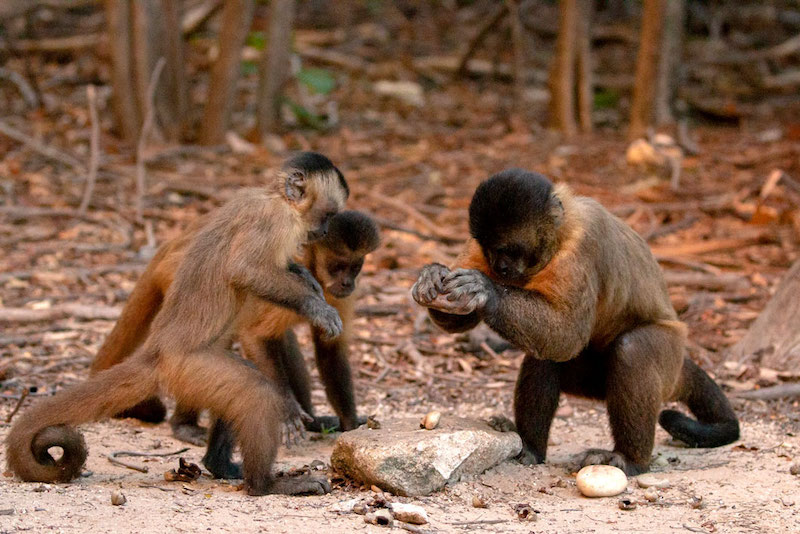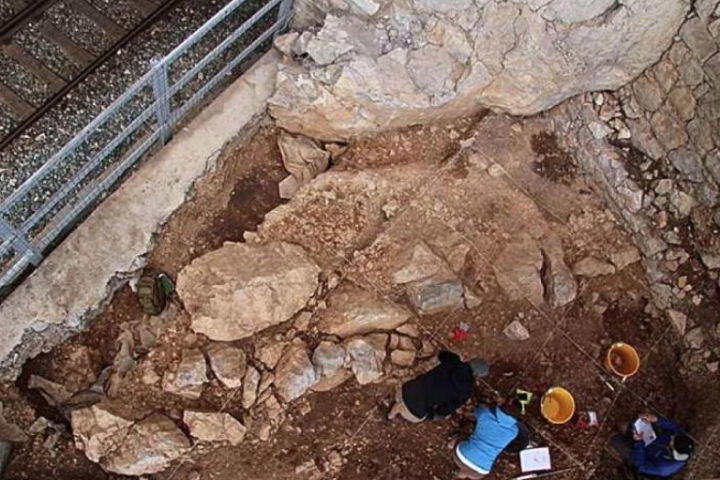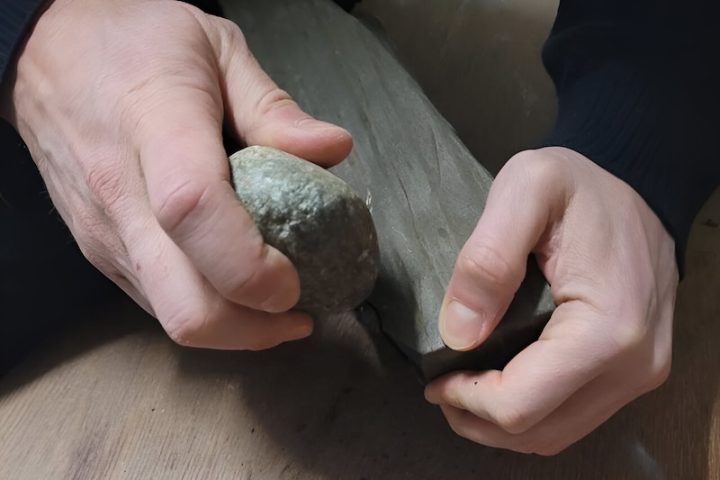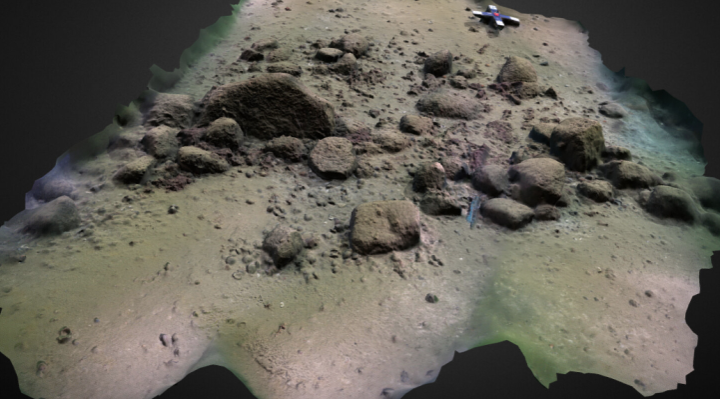Humans were not the only species to enter the Stone Age. Many animals are now known to have used stone tools. But which animals are these?
Many animals, from ants to fish and crows, use stones as tools. But until recently, only humans and our hominin relatives had a recognized archaeological record of stone tool use.
Now, the scientific community recognizes that hominins have company in this regard. So which species entered their own archaeological “stone age”, so to speak?
It seems that the Stone Age is not the most exclusive club. Chimpanzees, capuchin monkeys and long-tailed macaques were also in this club: archaeological remains document that these animals used stone tools in the past. Otters could be next.
In every primate species, tool use is a socially learned behavior. “It became part of their culture,” says Katarina Almeida-Warren, a primate archaeologist at Oxford University who studies chimpanzees.
Different groups use different tools. Some groups of chimpanzees, for example, use a “hammer” that they hit on an “anvil” to crack nuts.
Chimpanzees (Pan troglodytes) have been using hammers and anvils for thousands of years. According to research published in 2007 in the journal Proceedings of the National Academy of Sciences, chimpanzees in the Ivory Coast used these tools 4,300 years ago. In this study, the researchers say: “The ‘Chimpanzee Stone Age’ predates the arrival of settled agricultural villages in this part of the African rainforest.”

Capuchin monkeys (Sapajus libidinosus) in Brazil also use stone tools to crack nuts; researchers have discovered nut-cracking stones used by capuchins as far back as 3,000 years ago. Their tool styles changed over thousands of years in response to different foods, according to the findings in the journal Nature Ecology and Evolution.
Then, on a beach in Thailand, a team found stone tools once used by long-tailed macaques (Macaca fascicularis aurea) to open shells. According to a 2016 paper in the Journal of Human Evolution, these tools were probably used between 1950 and 2004.
It is unclear how these primates started using stone tools. In the case of chimpanzees, the “percussive material cultures” of early stone tools suggest that humans and chimpanzees inherited them from a common ancestor, the researchers wrote.
However, it is also possible that humans and chimpanzees learned to use stone tools independently of each other, as seems to be the case with other animals known to use stone tools.
“Stone tools are a mystery,” says Tiago Falótico, a biologist and primatologist at the University of São Paulo and one of the authors of the capuchin tool study. But as Falótico points out, entering the “stone age” does not necessarily mean that a group will soon follow a human evolutionary process. Nor does it mean that animals that used stone tools were more intelligent than animals that used other tools. “You can have the same cognition with stones, wood or leaves,” Falótico says.
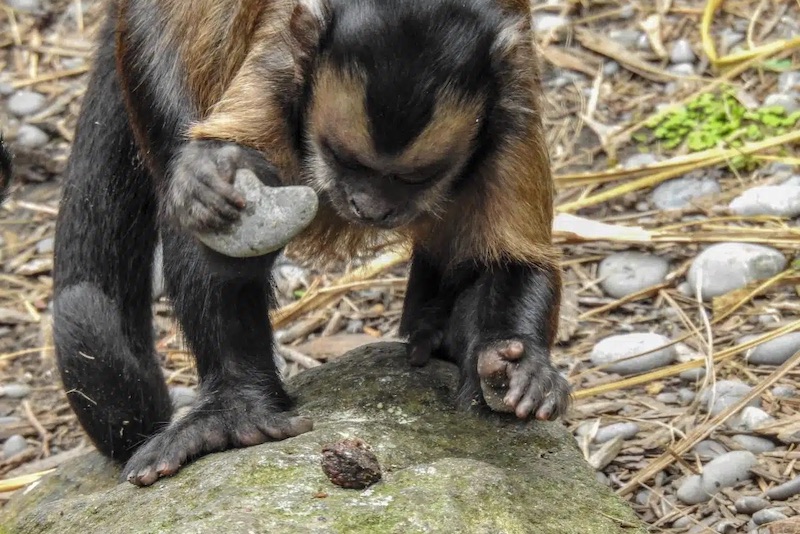
Instead, stone tools are valuable to the research community because of their longevity. Knowing that primate tools may turn up in excavations is important for archaeologists and anthropologists. “There’s a lot of debate about who made what,” says Almeida-Warren.
In 2022, a team from Argentina suggested that 50,000-year-old “human settlements” in Brazil were actually created by capuchin monkeys, according to research published in the journal The Holocene. The researchers found that the stone tools in question, crafted from quartzite and quartz stones, were strikingly similar to those made by capuchin monkeys in Serra da Capivara National Park in present-day Brazil.
Falótico says this paper is far from conclusive and hands-on analysis is still needed. But if true, the hypothesis will extend the archaeological record of capuchins’ stone tools by thousands of years, while continuing the debate over when humans settled in South America.
Even if it is clear which tools belong to which species, non-human-made tools could benefit human archaeology in other ways. The oldest hominin-made tools, from 3.3 million years ago, were found in part because primate tools give archaeologists new ideas about what to look for. “It sort of catalyzed the possibility that these other things existed.”
While the Human Stone Age gets its name from the tools that survived, Almeida-Warren points out that humans didn’t just use stones. Other “stone age” species must have done the same. Studying other tools of present-day primates can help researchers imagine human tools that have long since disappeared in nature.
Chimpanzees, for example, use long pieces of bark to catch termites. They also use medicinal plants to treat wounds. “In many cases, tools from plants are actually more complex,” says Almeida-Warren.
The archaeology of non-humans can also shed light on the behavior of these species over time. At ancient capuchin sites, for example, Falótico learned that monkeys adapted their tools to process different foods over centuries. Next, the researchers hope to illuminate the history of another tool-using animal: otters.
Researchers in California have observed sea otters knocking mussels onto rocks. According to a 2019 study in the journal Scientific Reports, the researchers were able to distinguish scratches on rocks used by otters as “anvils” from marks made by humans.
main source: Live Science. January 17, 2023.

